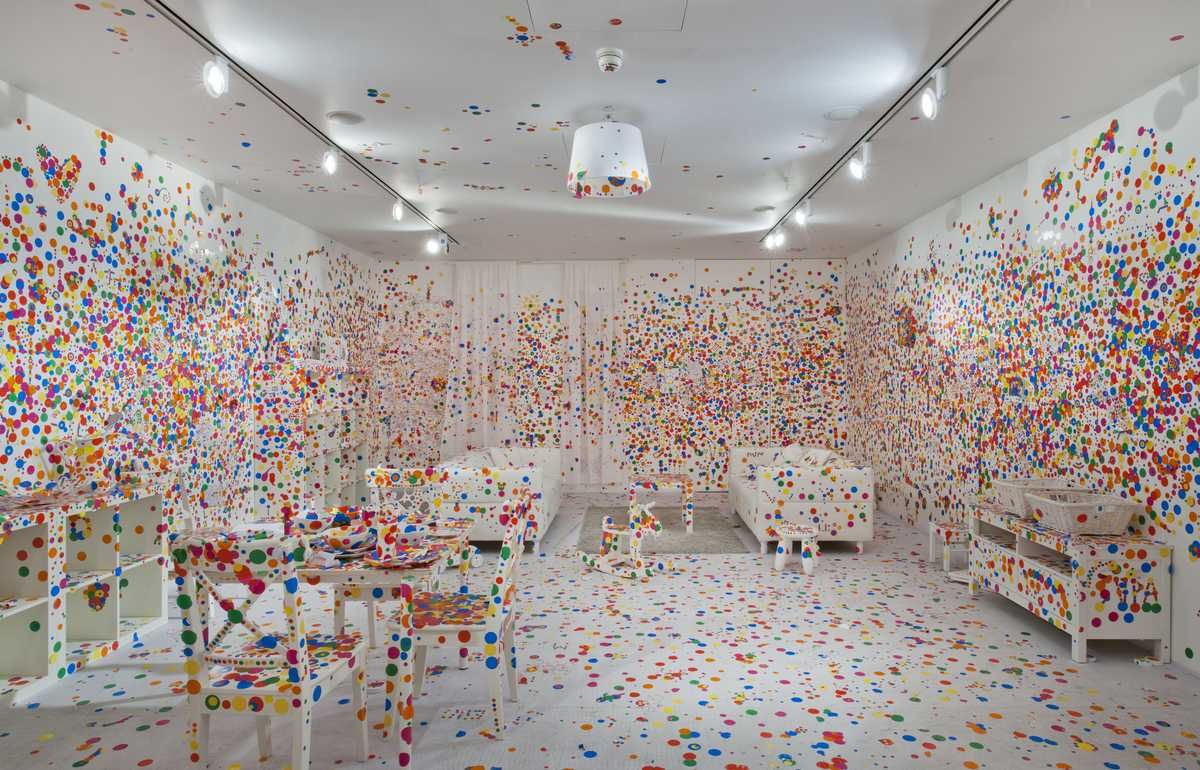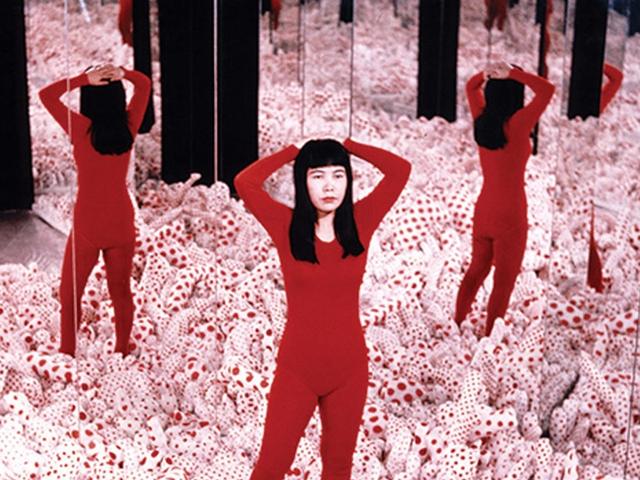The Yayoi Kusama art juggernaut shows no sign of slowing down. This summer, Tate Modern will stage Obliteration Room (23 July-29 August) which involves transforming a blank, white apartment space into a “sea of colourful dots”, the organisers say. The enclosure, filled with white furniture, will be located within Tate Modern’s Turbine Hall.
“Visitors are handed a sticker sheet of colourful dots with which to leave their mark on this stark interior, which slowly becomes transformed into a sea of colour,” a Tate statement says. Participants can also create their own works which will be added to an ever-expanding garden in the Turbine Hall. The Kusama installation—first staged at the Queensland Art Gallery, Australia, in 2002—is part of Tate Modern’s Uniqlo Tate Play programme scheduled for the school holidays.
Two of Kusama’s hugely popular Infinity Mirror Rooms installations are also on show at Tate Modern until June next year, providing much needed revenue for the gallery in the wake of the Covid-19 pandemic (tickets for the artist’s “unique vision of endless reflections” cost £10 full price, and continue to sell out).
A retrospective of Kusama’s work is also due to open at the M+ museum in Hong Kong later this year (12 November-14 May 2023). An accompanying publication, described as the “most comprehensive survey of her work to date”, will be published by Thames & Hudson in London (Yayoi Kusama: 1945 to Now). The volume, edited by Doryun Chong (M+ deputy director), is structured around six thematic sections including “The Biocosmic” and “Joy of Life”. The book also features selections from Kusama’s unpublished writings as well as correspondence with the UK artist Georgia O’Keeffe.
Ninety-three-year-old Kusama is one of the biggest stars in the art world, famed for her signature spot motifs and bold colours used across multiple media. Although Kusama left her conservative Japanese upbringing in her late 20s to immerse herself in the 1960s underground New York art scene—gaining some notoriety—it was not until much later in life that she achieved widespread recognition. Our must-read guide to books on Kusama includes Kusama’s Body Festival in 60s (2011) by the artist herself.



